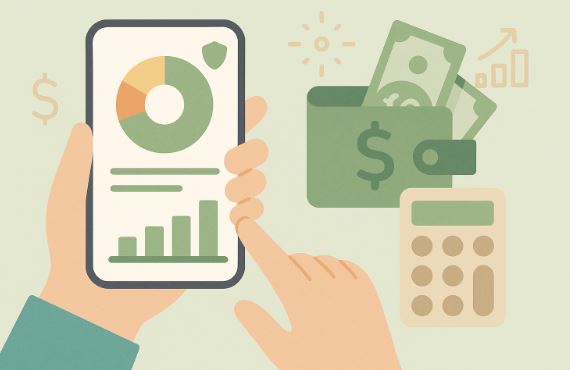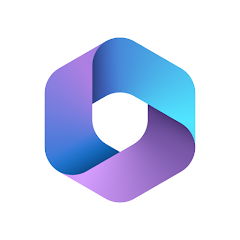How LinkedIn Became the GoTo Professional Networking App
19th November 2024
Peter Samos
LinkedIn has established itself as the primary platform for professional networking, fundamentally transforming the process through which individuals establish connections and progress in their careers. From its inception to its current standing as a dominant force within the realm of social media, LinkedIn has consistently adapted to address the requirements of its user base.
This article undertakes an examination of the historical trajectory of LinkedIn, delineating the distinguishing features that differentiate it from other social media platforms, and elucidating the transformative impact it has had on the professional networking arena. We invite readers to accompany us as we embark on an exploration of LinkedIn's journey through the past, present, and its anticipated future developments.
What is LinkedIn?
LinkedIn is a prominent online platform specializing in professional networking, providing individuals and businesses with the opportunity to establish and cultivate valuable business connections to support career advancement and growth.
With its user-friendly interface, LinkedIn offers a wide array of unique features that distinguish it from other social media platforms. These features include personalized news feeds that highlight industry updates, the ability to join specialized groups and forums for engaging in meaningful discussions, and staying informed about pertinent trends.
Additionally, the platform offers a dedicated space for showcasing professional accomplishments through comprehensive profiles, endorsements, and recommendations. This feature makes LinkedIn a potent tool for enhancing credibility and expanding one's network within the corporate realm.
The History of LinkedIn
The evolution of LinkedIn traces a compelling trajectory from its roots as a startup primarily centered on job search and career networking to its current status as a prevailing professional networking platform utilized on a global scale.
How Did LinkedIn Start?
The inception of LinkedIn was marked by the noble objective of revolutionizing the job search and professional networking landscape through the provision of a digital platform that enables professionals to connect and explore career opportunities.
Co-founded by individuals of esteemed reputation including Reid Hoffman, Allen Blue, Jean-Luc Vaillant, Eric Ly, and Konstantin Guericke, LinkedIn was formally launched in 2003. The genesis of this platform was rooted in the aspiration to cultivate a virtual environment where professionals could exhibit their capabilities, foster valuable connections, and delve into potential career pathways.
The founders conceptualized LinkedIn as a platform that would facilitate substantial connections surpassing the limitations of conventional networking avenues such as job fairs or cold outreach. This pioneering approach signified a paradigm shift in the manner professionals engaged in networking, rendering it more convenient and effective within the realm of the digital age.
When Did LinkedIn Become Popular?
LinkedIn rose to prominence as it became increasingly popular among job seekers and recruiters, providing a distinctive platform for networking and exploring employment opportunities.
Throughout its evolution, LinkedIn experienced substantial expansion, achieving notable milestones such as reaching 100 million users in 2011 and exceeding 500 million users by 2017. This growth was propelled by a confluence of factors, including the platform's emphasis on professional networking, the proliferation of remote work environments, and a growing emphasis on personal branding. Job seekers found LinkedIn to be instrumental in showcasing their skills and establishing connections with industry professionals, while recruiters utilized the platform to identify top talent from a vast pool of professionals.
This symbiotic relationship between job seekers and recruiters played a pivotal role in driving LinkedIn's surge in popularity.
What Makes LinkedIn Different from Other Social Media Platforms?
LinkedIn distinguishes itself from other social media platforms by its exclusive focus on professional profiles and business connections, establishing it as a specialized environment for career and business networking. Unlike platforms such as Facebook or Instagram, which prioritize personal social interactions and entertainment, LinkedIn offers a platform where individuals, companies, and professionals can highlight their competencies, establish connections with industry peers, and remain informed about industry developments.
The platform places a strong emphasis on cultivating a professional image, providing resources like a customizable profile, job listings, and a news feed that curates pertinent articles and updates from connections. This distinctive approach not only nurtures professional advancement but also paves the way for new prospects and partnerships.
Why is LinkedIn the Go-To Professional Networking App?
LinkedIn has solidified its position as the premier professional networking platform because of its extensive range of features tailored to facilitate job search, career progression, and professional networking.
1. Focus on Professional Networking
LinkedIn distinguishes itself by prioritizing professional networking, providing professionals with a specialized online platform to connect, share insights, and advance their careers. The platform's exclusive focus on professional interactions facilitates the establishment of meaningful connections centered around career objectives and industry affiliations. In contrast to general social media platforms that cater to a broader audience, LinkedIn enables users to showcase their expertise, experience, and accomplishments within a professional community.
Serving as a central hub for career advancement, LinkedIn enables individuals to cultivate their professional identity, access pertinent resources, and remain abreast of industry trends. By engaging with industry thought leaders, participating in relevant discussions, and joining professional groups, users have the opportunity to expand their professional network and acquire insights that bolster their professional growth.
2. Extensive User Base
LinkedIn is recognized for its substantial user base comprised of industry professionals, positioning it as an invaluable tool for establishing business relationships and networking within specific sectors. This diverse and extensive LinkedIn community offers users abundant opportunities to engage with professionals from various fields, facilitating collaborations, job prospects, and knowledge exchange. With millions of active users globally, the platform serves as a central hub for individuals to exhibit their competencies, expertise, and accomplishments, thereby augmenting their professional presence and credibility. The broad scope of the user base guarantees access to a varied pool of talents, ideas, and viewpoints, fostering a lively environment conducive to personal and professional development.
3. User-Friendly Interface
LinkedIn offers a user-friendly interface and comprehensive networking tools that enable users to easily establish and manage their professional profiles, connect with others, and efficiently navigate the platform.
The intuitive design of LinkedIn's interface allows users to effectively showcase their skills and experiences, thereby facilitating the development of a robust professional network. Through features such as tailored news feeds, job recommendations, and messaging capabilities, LinkedIn delivers a seamless networking experience. Emphasizing simplicity and accessibility in its user-centric approach, the platform enables professionals to interact with peers, recruiters, and industry influencers conveniently. By simplifying connections and supporting communication, LinkedIn improves the overall user experience and presents valuable opportunities for career advancement and professional growth.
4. Job Search and Recruitment Features
LinkedIn's job search and recruitment functionalities offer users a wide range of tools to identify job openings and establish connections with recruiters, positioning it as a crucial resource for individuals in pursuit of employment opportunities.
Job seekers have the convenience of conducting tailored searches for job listings that align with their skillset, professional background, and preferences. Through LinkedIn's intuitive interface, applicants can streamline the application process by directly submitting their profiles or resumes to prospective employers.
Conversely, recruiters can leverage sophisticated search filters to pinpoint suitable candidates, tap into an extensive pool of professionals, and utilize resources such as LinkedIn Recruiter for efficient applicant management and tracking.
How Has LinkedIn Changed the Professional Networking Landscape?
LinkedIn has significantly altered the professional networking landscape by offering a digital platform that promotes career advancement, extends business relationships, and simplifies the networking process.
1. Increased Accessibility and Reach
LinkedIn has expanded the accessibility and global reach available to professionals by providing a platform for virtual networking, enabling users to establish connections with industry experts and business leaders on a global scale.
Through its intuitive interface and robust search functionalities, LinkedIn enables professionals to cultivate meaningful relationships with individuals hailing from various backgrounds and sectors. This diversity paves the way for collaborative endeavors, knowledge sharing, and reciprocal assistance. The platform's international scope ensures that networking is no longer constrained by geographic limitations; professionals can readily engage with like-minded peers from around the world. These networking avenues facilitate the exchange of insights, career opportunities, and mentorship, thereby nurturing a vibrant and interactive professional community.
2. Enhanced Job Search Process
LinkedIn has revolutionized the job search process by establishing a centralized platform for job applications, job openings, and professional networking, thereby simplifying the navigation of the job market.
Through the utilization of sophisticated algorithms, LinkedIn's job application functionalities suggest pertinent job listings based on a user's profile and preferences, consequently heightening the probability of identifying suitable employment prospects. The platform's extensive network of professionals and organizations enables job seekers to engage with industry experts, obtain guidance, and broaden their professional connections, ultimately enriching their career opportunities.
The availability of a diverse array of job vacancies on LinkedIn ensures that job seekers can explore various positions across different sectors and locations, consequently enhancing the likelihood of securing an ideal career match.
3. Facilitated Professional Development
LinkedIn has played a crucial role in supporting professional development by providing a range of networking tools, resources, and avenues for career progression and skill enrichment. The platform's robust job listing capabilities enable users to explore new career opportunities, while its extensive repository of industry insights and thought leadership articles ensures individuals are well-informed about industry trends and best practices.
Additionally, LinkedIn Learning offers a diverse array of courses aimed at enhancing skills and knowledge, with the added benefit of earning certifications upon successful completion. Engaging with industry leaders and peers via groups and messaging features not only facilitates valuable networking opportunities but also nurtures relationships that can potentially lead to mentorship, collaborations, and employment prospects.
The Future of LinkedIn
The future outlook for LinkedIn appears favorable, as the company strategizes ongoing expansion and innovation. Their objectives include entering new markets and integrating with other platforms to augment user experience.
1. Expansion into New Markets
LinkedIn's strategy for expanding into new markets will be centered around customizing its professional networking platform to address the distinct requirements of diverse global audiences.
This approach entails gaining a profound understanding of the cultural, linguistic, and professional intricacies prevalent in various regions. Through the localization of content, features, and services, LinkedIn aims to enhance the attractiveness and accessibility of its platform to a wider range of users.
While challenges may surface in navigating diverse regulations, business practices, and user preferences across different countries, LinkedIn perceives these obstacles as opportunities for growth and knowledge acquisition. The platform's adaptability plays a pivotal role in ensuring that professionals worldwide can effectively connect, network, and advance their careers on LinkedIn.
2. Integration with Other Platforms
LinkedIn is focused on enhancing its digital presence through the integration with other platforms, aiming to provide users with a seamless experience and broaden its professional networking capabilities.
By considering potential integrations with platforms such as Microsoft Teams or Google Workspace, users stand to gain from a centralized platform for both work-related communications and professional networking. This integration could enable users to access features like messaging, document sharing, and video conferencing alongside LinkedIn's job search and networking tools, facilitating a smooth transition between tasks and promoting enhanced workflow efficiency.
Furthermore, the integration with e-learning platforms like Coursera or Udemy presents an opportunity for users to highlight their newly acquired skills and certifications directly on their LinkedIn profiles. This feature would not only elevate their professional credibility but also increase their visibility to potential employers, thereby enriching their professional prospects.
3. Continued Growth and Innovation
LinkedIn's strategic goals prioritize sustained growth and innovation, with a specific focus on augmenting professional networking features and unveiling novel tools in support of career advancement.
This dedication is manifested through LinkedIn's imminent initiatives to unveil AI-driven job recommendations, enhanced networking events capabilities, and improved online learning resources. These enhancements are designed to offer users more personalized and efficient networking avenues, superior job search outcomes, and valuable skill enhancement opportunities.
Through the utilization of technology and insights from users, LinkedIn aims to develop a dynamic and user-centric platform that meets the evolving requirements of its diverse user demographic.















